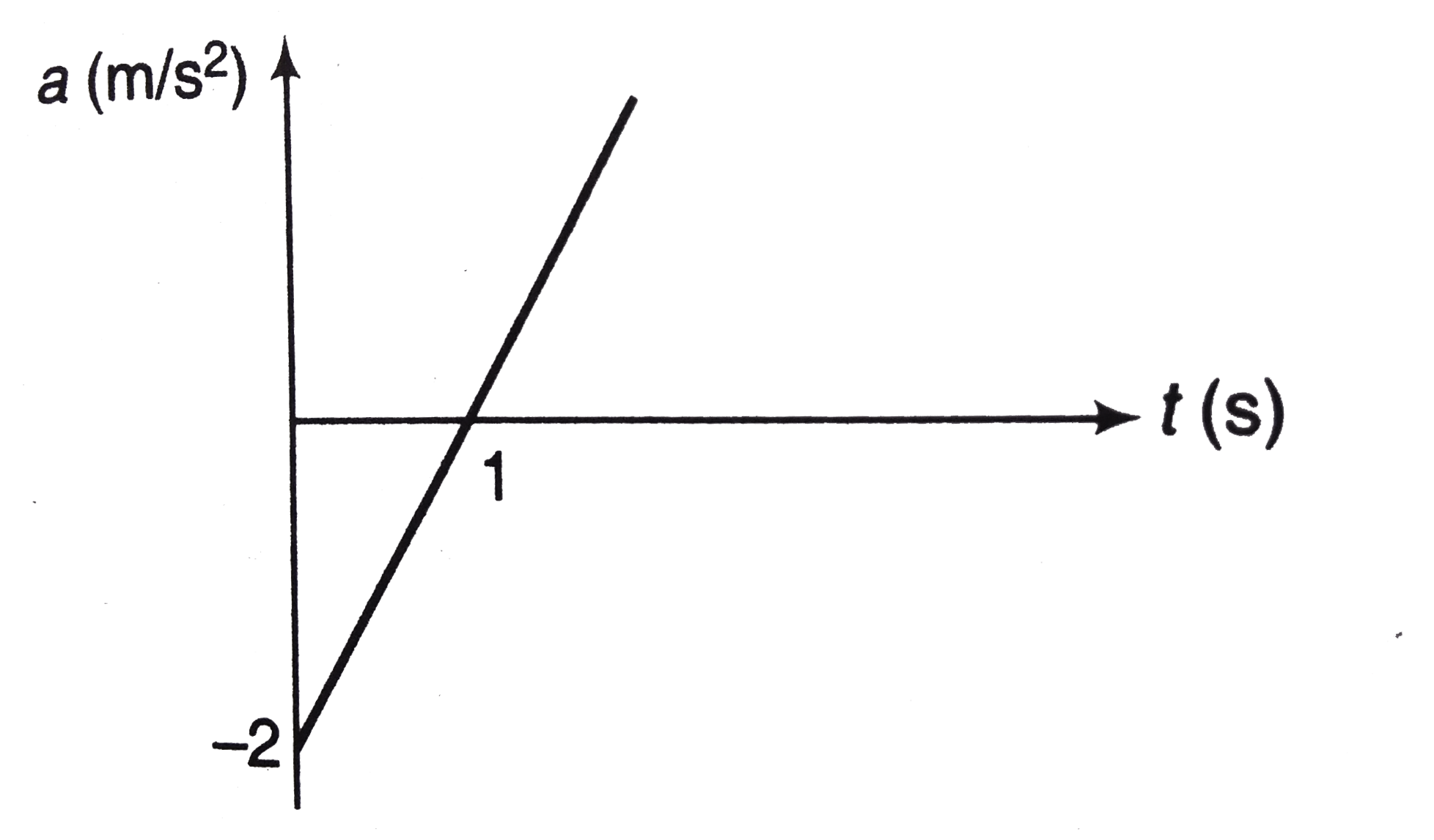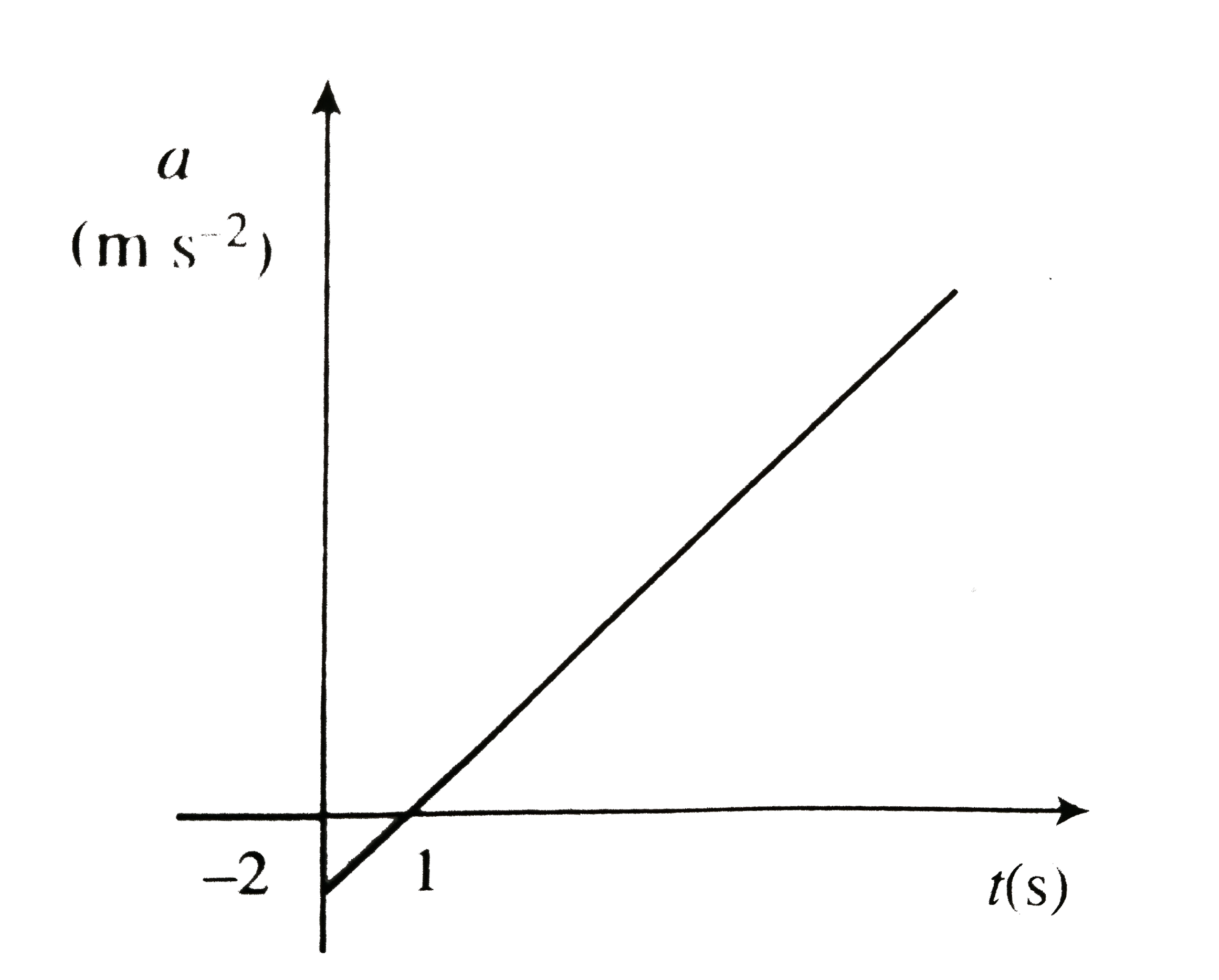If velocity (in ms−1) varies with time as V = 5t, find the distance travelled by the particle in time interval of t = 2s to t = 4 s.Solution in Gujrati
24 m
30 m
10 m
20 m
The correct Answer is:B
Here, V = 5t is given.
∴dxdt=5t(∵V=dxdt)
∴dx=5tdt
Taking integration ∫x20dz=5∫42tdt
(∵t=2s to t=4s)
∴x=5[t22]42=5[8−2]
∴x=30,
Topper's Solved these Questions
- MOTION IN A STRAIGHT LINE BOOK - KUMAR PRAKASHANCHAPTER - MOTION IN A STRAIGHT LINE EXERCISE - SECTION-F
20 Videos
- MOTION IN A STRAIGHT LINE BOOK - KUMAR PRAKASHANCHAPTER - MOTION IN A STRAIGHT LINE EXERCISE - QUESTION PAPER
11 Videos
- MOTION IN A STRAIGHT LINE BOOK - KUMAR PRAKASHANCHAPTER - MOTION IN A STRAIGHT LINE EXERCISE - SECTION-D
26 Videos
- MECHANICAL PROPERTIES OF FLUIDS BOOK - KUMAR PRAKASHANCHAPTER - MECHANICAL PROPERTIES OF FLUIDS EXERCISE - QUESTION PAPER (SECTION -C)
3 Videos
- OBJECTIVE QUESTIONS AS PER NEW PAPER STYLE BOOK - KUMAR PRAKASHANCHAPTER - OBJECTIVE QUESTIONS AS PER NEW PAPER STYLE EXERCISE - CHAPTER - 8 (Match Type questions)
5 Videos
Similar Questions
Distance covered by ball thrown upwards with speed 'u' in last 't' seconds before it reaches max. height is .............
View SolutionDefine frame of reference and give its types.
View SolutionAmong the four graph shown in the figure there is only one graph for which average velocity over the time interval (O,T) can vanish for a suitably chosen T. Which one is it ?
View SolutionGlycerine flows steadily through a horizontal tube of length 1.5m and radius 1.0 cm . If the amount of glycerine collected per second at one is 4.0×10−3kgs−1 , what is the pressure difference between the two ends of the tube ? (Density of glycerine =1.3×10103kgm−3 and viscosity of glycerine =0.83 Pa s). [ you may also like to check if the assumption of laminar flow in the tube is correct]
View SolutionType of satellites are given in Column-I and their uses are given in Column-II. Match them properly :
Column-IColumn-II(1) Polar satellite(a) Tele communication(2) Geo-stationary satellite(b) Investigation(c) For information about atmosphere
View SolutionThe acceleration of particle varies with time as shown.

(a) Find an expression for velocity in terms of t.
(b) Calculate the displacement of the particle in the interval from t=2s to t=4s. Assume that v=0 at t=0.
View SolutionThe acceleration of a particle varies with time as shown in .
 .
.
a. Find an expression for velocityinterms of t. Assume that v=0 at t=0
b. Calculate the displacement of the paarticle in the time interval from t=2s s.
View SolutionSuppose that a particle mvoes on a straight line so that is velocity at time t is v(t)=(t^(2)-2t)m//s . (a). Find the displacement of the particle during the time interval 0 le t le 3 (b). Find the distance traveled by the particle during the time interval 0 le t le 3 .
View Solutionthe velocity of a particle varies with time as shown below the distance travelled by the travelled by the particle during t=2s"and" t= 6s. Is
View SolutionThe acceleration a (in ms−2) of a body, startin gfrom rest varies with time t (in s) following the equation a=3t+4. The velocity of the body at time t=2s will be:
View SolutionVelocity of particle of mass 2kg varies with time t accoridng to the equation →v=(2tˆi+4ˆj)ms−1. Here t is in seconds. Find the impulse imparted to the particle in the time interval from t=0 to t=2s.
View SolutionThe position of a particle varies with time according to the relation x=3t2+5t3+7t, where x is in m and t is in s. Find
(i) Displacement during time interval t = 1 s to t = 3 s.
(ii) Average velocity during time interval 0 - 5 s.
(iii) Instantaneous velocity at t = 0 and t = 5 s.
(iv) Average acceleration during time interval 0 - 5 s.
(v) Acceleration at t = 0 and t = 5 s.
View SolutionPower supplied to a particle of mass 4 kg varies with time as P=(3t^(2))/(2) watt. Here t in second. If velocity of particle at t = 0 is v = 0, the velocity of particle at time t = 2s will be
View Solutionthe angular velocity omega of a particle varies with time t as ω=5t2+25rads. the angular acceleration of the particle att=1s is
View SolutionVelocity-time equation of a particle moving in a straight line is v=2t-4 for t le 2s and v= 4-2t for 1 gt 2s . The distance travelled ( in meters) by the particle in the time interval from t=0 to t=4s is 4k. The value of 'k' is ( Here t is in second and v in m/s) :
View Solution
